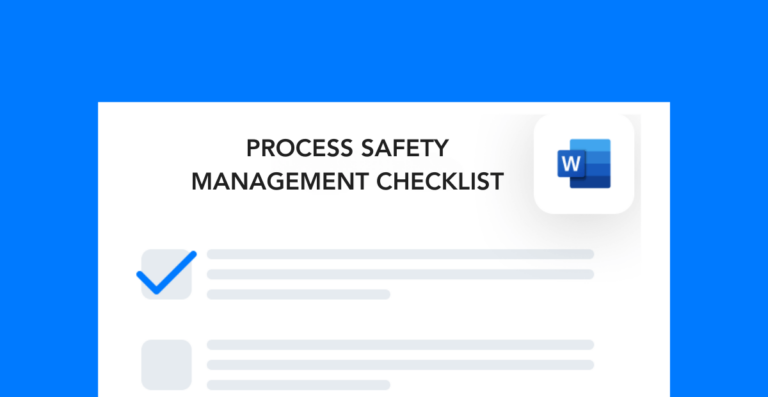OSHA requires you to conduct an audit of your PSM program at least once every three years to ensure its effectiveness. So, you’ll need to know what process safety performance indicators to look for during your audit if you want to maintain compliance.
Beyond controlling hazardous chemicals in the workplace, routine PSM audits can help other areas of your EHS program. Follow these best practices to get the most out of your audits and to better protect your workers from process safety risks.
Reactive PSM metrics
In safety, there are generally two approaches to every problem: reactive and proactive. While you should always aim to be proactive, there are several back-end metrics you can use to assess performance.
Here are some examples of lagging indicators of how your PSM program is performing.
PSM training compliance
One of the 14 elements of PSM is that all your workers have process-specific safety training. You may need to make changes to your approach if your training materials are outdated, or if newer processes don’t have training content at all.
Another indicator here is the number of past due courses. If your workers are missing their process-specific training requirements, you need to figure out how to get everyone up to speed and keep everyone updated moving forward.
Process safety incident rates
I’d recommend looking at incident rates for each work process, rather than the total site incident rate. If your PSM-regulated processes have high incident rates, then your PSM program isn’t effective.
Here are some questions to help you figure out why certain process safety measures aren’t working:
- Do safety incidents involve a specific piece of equipment, machinery, or tool?
- Do safety incidents involve a specific part of the body?
- Do safety incidents happen at a certain time of the day?
You’re basically looking for patterns to see which area of the process to address. Remember, lagging indicators can only tell you how you’ve performed in the past. While this information can help you develop new strategies, it’s equally important to analyze where you’re heading.
Leading process safety indicators
On the flip side of performance, you have leading indicators. Looking at these metrics allows you to get an idea of how your process safety program will perform in the future. This is a more proactive approach, as it allows you to course correct before incidents happen.
Here are some examples of metrics you might look at:
- Upcoming PSM training
- Number and frequency of near miss incidents
- Employee culture surveys
- Participation in safety initiatives
When I look at these process safety performance indicators, I like to assess my team’s execution of department requirements. For example:
- How quickly do we attend to hazard reports?
- How often do we audit our compliance documents and training records?
- How much time do we spend in the office versus the field?
- How well do we engage and communicate with the workforce?
Focus on PSM performance essentials
A site’s safety performance is a direct reflection of its safety team. When the EHS team does not perform well, safety risks increase. But oftentimes, as EHS professionals, we’re up against tight budgets that limit who we can hire and what we can invest in for the PSM program.
If you can’t hire more people, you need to find ways to reduce the workload. Start by canceling any upcoming projects that don’t directly impact safety performance. Getting back to the basics can help you rebuild your approach without making a full-stop overhaul of your day-to-day routine.
Look at process safety performance indicators to identify the critical areas you need to improve. If your incident rates are too high, for example, review how your team manages near misses. Do they do risk assessments for those processes to find out why the near miss happened? Do they follow up on corrective actions?
Maintaining compliance and excellence depends entirely on how well you’re able to pivot from ineffective strategies and procedures. But to do that, you have to admit when what you’re doing isn’t working. If you track performance metrics and are proactive about making changes, you’ll not only be able improve process safety outcomes, but you’ll also be able to reach new levels of performance in other areas of your operation as well.
Other posts you might like…
No posts


